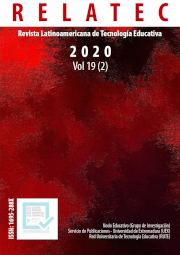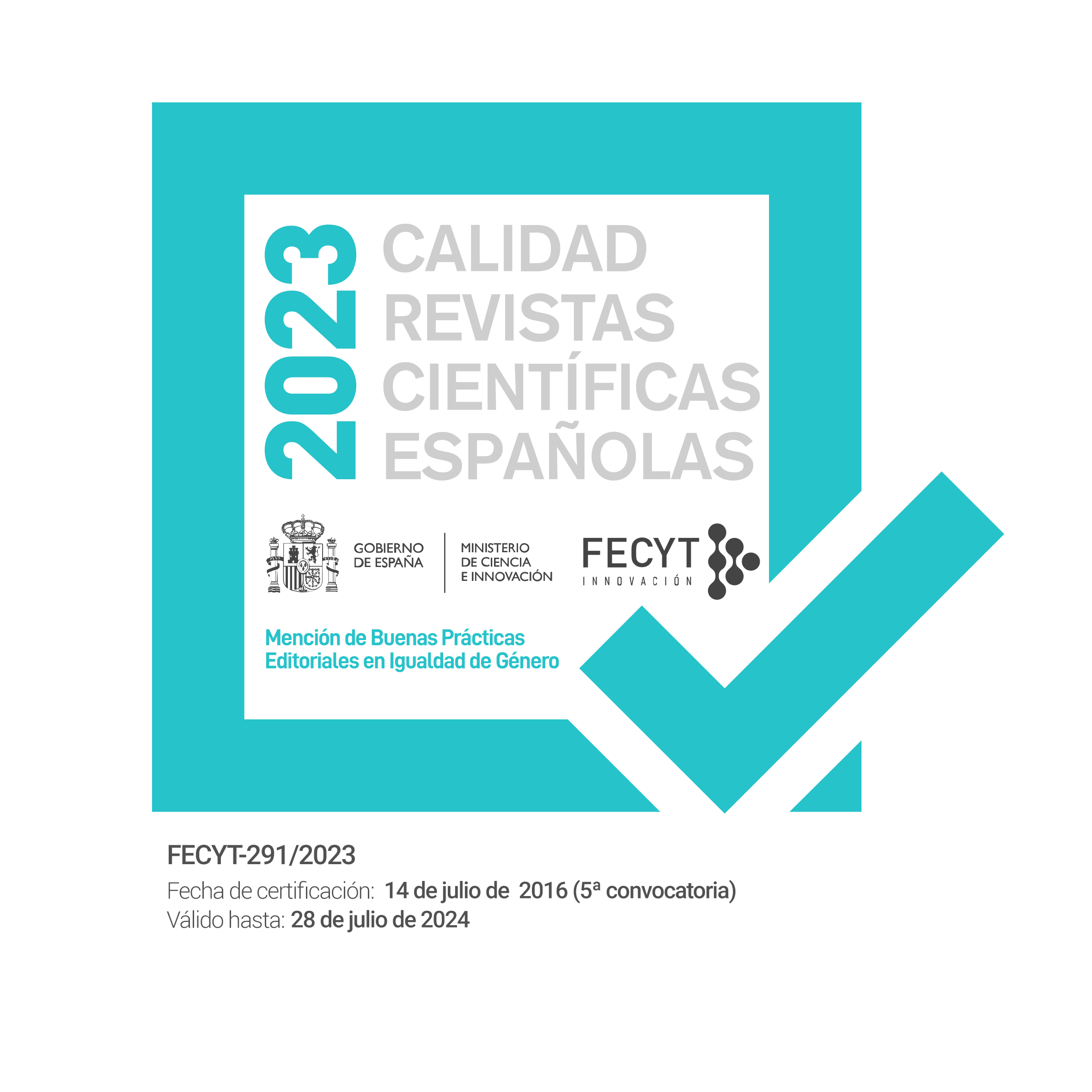Student Behavior in Accepting and Using a Podcast Aggregator in Disseminating Knowledge
DOI:
https://doi.org/10.17398/1695-288X.19.2.173Keywords:
Education technologies, UTAUT, podcast, APP, AccountingAbstract
Using the Unified Theory of Acceptance and Use of Technology (UTAUT), this study aims to identify which factors interfere in students' behavior in relation to acceptance and use of a podcast aggregator that provides tips to students about the content disseminated in the expository class, in the undergraduate course in Accounting Sciences, at a Federal University of Southern Brazil. With regard to the development of methodological aspects, this study used the quasi-experiment method of single case projects, data were collected through the application of a questionnaire on site with closed questions, the technique used for data analysis was the modeling of structural equations (SEM), using the method of partial least squares by modeling the paths, operationalized by the software SPSS v. 017 and SmartPLS v. 3.0. After the hypothesis test, two relationships were significant (H2 and H14): expectation of performance and social influence positively impacted the acceptance and intention to use the podcast aggregator. Thus, based on the results of the Structural Equation Modeling, it was possible to know the behavior of the UTAUT constructs in the scenario of higher accounting education, with the inclusion of an active methodology that valued the insertion of a technological tool in the dissemination of knowledge.
References
Ally, M., Grimus, M., & Ebner, M. (2014). Preparing teachers for a mobile world, to improve access to education. Prospects, 44(1), 43-59.
Anderson, J. E., Schwager, P. H., & Kerns, R. L. (2006). The Driver s for Acceptance of Tablet PCs by Faculty in a College of Business. Journal of Information Systems Education, 17(4), 35-47.
Bachelard, G. (2006). A epistemologia. Lisboa, Portugal: Edições 70.
Bandyopadhyay, K., & Fraccastoro, K. A. (2007). The effect of culture on user acceptance of information technology. Communication of the Association for Information Systems, 19, 522-543.
Basidious, I. G., & Lange, P. A. (2009). Na assessment of the learning benefits of using a webbased learning environment when teaching accounting. Advances in acounting, incorporating advacens in international accounting, 25(10), 13-19.
Brandura, A. (1986). Social Foundations of Thought e Action- A Social Cognitive Theory. Englewood Cliffs: Prentice Hall.
Chin W.W. (1998). The Partial Least Squares Approach for Structural Equation Modeling. In G. A. Marcoulides (ed.), Modern Methods for Business Research (v.1, pp. 295-336) Lawrence Erlbaum Associates, London.
Chiu, C. M., & Wang, E. (2008). Understanding Web-based learning continuance intention: The role of subjective task value. Information & Management, 45(3), 194-201.
Corlett, D., Sharples, M., Chan, T., & Bull, S. (2004). A Mobile Learning Organizer for University Students. In: Proceedings of The IEEE International Workshop on Wireless and Mobile Technologies in Education (WMTE’04), 2, 15(1), 120-137.
Davis, F. D. (1989). Perceived usefulness, perceived ease of use and user acceptance of information technology. MIS Quarterly.
Davis, F. D., Bagozzi, R. P., & Warshaw, P. R. (1989). User acceptance of computer technology: a comparison of two theoretical models. Management science, 35(8), 982-1003.
Fishbein, M., & Ajzen, I. (1975). Belief, attitude, intention and behavior: An introduction to theory and research. Reading, Massachusetts: Addison- Wesley.
Gall, J., Borg W., & Gall, M. (2003). Educational research: An introduction 7 ed. Boston: Pearson Education.
Gikas, J., & Grant, M. M. (2013). Mobile Computing devices in Higher Education: Student Perspectives on Learning With Cellphones, Smartphones & Sociamedia. The Internet and Higher Education, 19(7), 18-26.
Gupta, B., Dasgupta, S., & Gupta, A. (2008). Adoption of ICT in a Government Organization in a Developing Country: An Empirical Study. The Journal of Strategic Information Systems, 17(2), 140-154.
Hair, J. F., Black, W. C., Babin, B. J., Anderson, R. E., & Tatham, R. L. (2009). Análise multivariada de dados. (6a ed.) Porto Alegre: Bookman.
Ismail, I., Bokhare, S. F., & Azizan, S. N. (2013). Teaching via mobile phone: A case study on Malaysian Teachers Technology Acceptance and readiness. Journal of Educators Online, 10(1), 1-38.
Keskin, N. O., & Metcalf, D. (2011). The Current Perspectives, Theories and Pratices of mobile Learning. The Turkish Online Journal of Educational Technology, 10(5), 202-208.
Kolb, L. (2011). Cell Phones in the Classroom: A Pratical Guide for Educators e-book, Wasington: International Society for Technology in education.
Leite, L. S. (2011). Mídia e a perspectiva da tecnologia educacional no processo pedagógico contemporâneo. In: W. Freire (Org.). Tecnologia e educação: as mídias na prática docente. Rio de Janeiro: WAK.
Looi, C., Seow, P., Zhang, B., So, H., Chen, W., & Wong, L. (2009). Leveraging mobile technology for sustainable seamless learning: A Research Agenda. British Journal of Education Technology, 30(1), 1-16.
López-Perez, M. V., Peréz-López, M. C., & Rodrigues-Ariza, L. (2011). Blended Learning in Higher Education: Students Perceptions and Their Relation to Outcomes, Computers e education, 56(10), 818-826.
Machado, E. A. (2014). Desempenho acadêmico e satisfação dos estudantes na modalidade EaD: um estudo comparativo entre concluintes dos cursos de Ciências Contábeis e Administração (Tese de Doutorado). Faculdade de Economia, Administração e Contabilidade, Universidade de São Paulo, São Paulo, SP, Brasil.
Malhotra, N. (2001). Pesquisa de marketing. (3a ed.) Porto Alegre: Bookman.
Mazzioni, S. (2013). As estratégias utilizadas no processo de ensino-aprendizagem: concepções de estudantes e professores de Ciências Contábeis. Revista Eletrônica de Administração e Turismo, 2(1), 93-109.
Mcknight, K., O`Malley, K., Ruzic, R., Horsley, M. K., Franey, J. J., &; Bassett, K. (2016). Teaching in a digital age: how educators use technology to improve student learning. Journal of Research on Technology in Education, 48(3), 194-211.
Mondini, V. D. (2017). Relações entre Fatores de Aceitação da Tecnologia e a Retenção de Estudante em Curso Online (Tese de Doutorado). Universidade Regional de Blumenau – FURB. Blumenau, SC, Brasil.
Nganga, C. S. N. (2015). Aceitação do uso de recursos tecnológicos pelos docentes de pós-graduação em Contabilidade (Dissertação de Mestrado). Universidade Federal de Uberlândia, Uberlândia, MG, Brasil.
Nielsen, J. (2010). IPad Usability: First Findings From User Testing. Jakob Nielsen's Alertbox. Recuperado de:
http://www.useit.com/alertbox/ipad.html , em 16 jan 2019.
Nogueira, D. R. (2014). Vento da mudança: estudo de caso sobre a adoção de ambientes virtuais no ensino presencial em contabilidade (Tese de Doutorado). Faculdade de Economia, Administração e Contabilidade, Universidade de São Paulo, São Paulo, SP, Brasil.
Oliveira, C. C., Costa, J. W., & Moreira, M. (2004). Ambientes informatizados de aprendizagem. In: J. W., Costa, & M. A. M. Oliveira (orgs.), Novas linguagens e novas tecnologias: Educação e sociabilidade. Petrópolis: Vozes.
Park, J. K., Yang, S., & Lehto, X. (2007). Adoption of mobile technologies for chinese consumers. Journal of Electronic Commerce Research, 8(3), 196-206.
Park, S. Y., Nam, M. W., & Cha, S. B. (2011). University Students Behavioral Intention to Use Mobile Learning: Evaluating the Technology Acceptance Model. British Journal of Educational Technology, 43(12), 592-605.
Pynoo, B., Devolder, P., Tondeur, J., Braak, J., Duyck, W., & Dyck, P. (2011). Predicting secondary school teachers acceptance and use of a digital learning environment: A cross sectional study. Computers in Human Behavior, 27, 568-575.
Ringle, C., Silva, D., & Bido, D. S. (2014). Modelagem de Equações Estruturais com utilização do Smartpls. Revista Brasileira de Marketing, 13(2), 54-71.
Rogers, E. M. (1995). Diffusion of Innovations. New York: The Free Press.
Saragoça, V. A. M., & Domingues, M. J. C. S. (2013). Fatores que influenciam o Uso e a Intenção de Uso das Tecnologias: um estudo em uma Universidade. Anais do Encontro da ANPAD – EnAnpad, Rio de Janeiro, RJ, Brasil, 33.
Taylor, S., & Todd, P. A. (1995). Understanding Information Technology Usage: A Test of Competing Models. Information Systems Research, 6(2), 144-176.
Tenenhaus, M., Vinzi, V., Chatelin, Y., & Lauro, C. (2005). PLS path modeling. Computacional statistics & Data
Analysis, 48(1), 159-205.
Thompson, R. L., Higgins, C. A., & Howell, J. M. (1991). Personal computing: toward a conceptual model of utilization. MIS Quarterly, 15(1), 125–143.
Utterberg, M., & Lundin, J. (2017). What is the benefit of that? Mathematics Teachers’ Motives in Discarding Digital Technology in their Teaching. Selected Papers of the IRIS, 1(8), 76-88.
Valentini, C. B., & Soares, E. M. S. (2005). Aprendizagem em Ambientes Virtuais: compartilhando ideias e construindo cenários. Caxias do Sul: EDUCS.
Venkatesh, V., Morris, M. G., Davis, G. B., & Davis, F. D. (2003). User acceptance of information technology: toward a unified view. MIS Quarterly, 27(3), 425-478.
Venkatesh, V., Thong, Y. L. J., & Xu, X. (2012). Consumer acceptance and use of information technology: extending the unified theory of acceptance and use of technology. MIS Quarterly, 36(1), 157-178.
Viberg, O., & Gronlund, A. (2013). Cross-cultural analysis of users' attitudes toward the use of mobile devices in second and foreign language learning in higher education: A case from Sweden and China. Computers & Education, 69(16), 169-180.
Williams, M. D., Rana, N. P., Dwivedi, Y. K., & Lal, B. (2011). Is UTAUT really used or just cited for the sake of it? A Systematic review of citations of UTAUT’s originating article. In: Proceendings of the ECIS 2011.
Yan, L., Zhang, Y., Yang, L. T., & Ning, H. (2010). The Internet of Things: from RFID to the Next-Generation Pervasive Networked Systems. Auerbach Publications: Nova Iorque e Londres
Zardini, A. S. (2016). O uso do WhatsApp na sala de aula de Língua Inglesa – relato de experiência em um curso de idiomas. In: Anais do V Simpósio Sobre O Livro Didático De Língua Materna E Língua Estrangeira E Do Iv Simpósio Sobre Materiais E Recursos Didáticos Blucher Design Proceedings (v.2, n.6, pp.227-235). São Paulo: Blucher.
Downloads
Published
Issue
Section
License
Authors who publish in this journal accept the following conditions:
1. The Author retains copyright in the article. Upon acceptance of the article, the author shall grant to the Publisher the right of first publication of the article. with the dcoument registered with the Creative Commons Attribution-NonCommercial-NoDerivative 4.0 International (CC BY-NC-ND) license, which allows to third parties to use what is published whenever they mention the authorship of the work and the first publication in this journal.
2. Authors can make other independent and additional contractual agreements for the non-exclusive distribution of the article published in this journal (eg, include it in an institutional repository or publish it in a book) provided they clearly indicate that the work was published for the first time in this journal.
3. Authors are allowed and recommended to publish their work on the Internet (for example on institutional or personal pages) before and during the review and publication process, as it can lead to productive exchanges and a greater and faster diffusion of published work (see The Effect of Open Access).









